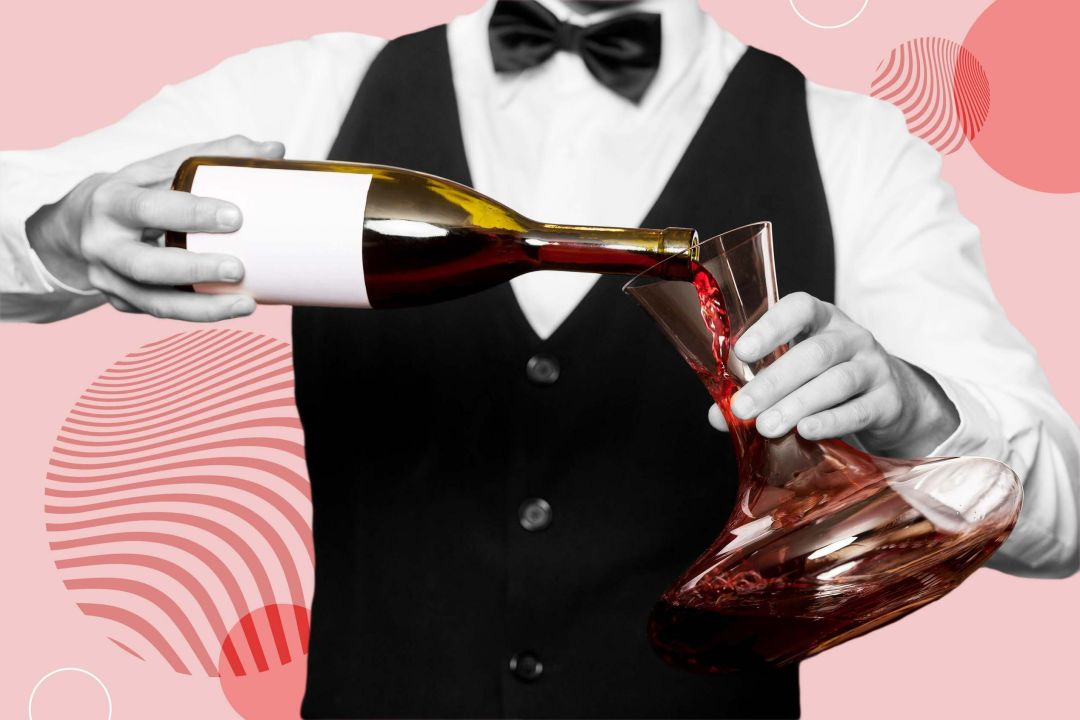Do You Actually Need to Decant Wine?

Recently, a friend told me he received a wine decanter as a present and texted me a photo of it. Naturally, I was intrigued. It looked like no other decanter I have ever seen. It includes a glass vessel that is shaped like a normal decanter, with a wide, bulbous bottom, but the glass is kept in a round metal case that snaps shut. Why? I have no idea. But it got me thinking about decanting and the science behind it.
Decanting has been around since corks began to be used to close wine bottles. With the advent of corks, wine could be aged, and it was found that red wine improved markedly over time. However, the improved wine came with one drawback: The bitter tannins that appear so prevalent in young red wines don’t just disappear. They change.
Over time, with small amounts of air that the wine absorbs through the cork, the tannin molecules alter their state and, while that produces a more balanced wine, it also leaves sediment in the bottle that is referred to as dregs. When pouring an older red wine, it became important to not mix the dregs when pouring. Thus, decanting was created.
The original process was to hold a candle under the neck of the bottle and watch the wine slowly being poured into a vessel (aptly named a decanter). When the clear wine became cloudy, it was time to stop pouring or the dregs would make the wine bitter. The dregs could then be discarded or turned into vinegar.
I once participated in a monthly forum held by a physician who had the ability to purchase fine French wine, but did not believe in decanting. As he passed bottles around the table, it quickly became evident that the first person to taste the wine thought the wine was excellent, but the last said the same wine was bitter. I believe the host enjoyed this confusing process.
While eliminating dregs is the primary objective of decanting, aeration also occurs. Over time, with modern winemaking methods, red wines have become enjoyable at a younger age. When you pour wine into a decanter, the aeration allows a younger wine to take on the characteristics of an aged wine with a smoother feel.
The use of a decanter is meant to be temporary. The aerated wine will turn bad within a few days—even earlier for older wines. However, in the past, it was fairly common to leave fortified wines like port or sherry in crystal decanters for much longer. Unfortunately, if the glass was leaded, the lead could leach into the wine. Not good.
Bob McGinn has spent his entire career in the wine industry—forming wine clubs, working in wine sales marketing and engaging in all facets of the winemaking process, including vine management, fermentation and yeast analysis. He has developed wine programs for companies such as Marriott, Sheraton and Smith & Wollensky, and consults with local restaurants. You can read more of McGinn’s work at gulfcoastwinejournal.com.



